April 2014
 |
Miriam had
spend 12 days in hospital when she returned home on April 4. So the
largest collectors fair in the Netherlands on the 12th and 13th came too
soon for her and Joop had to go there by himself. But even a playing
card collector is never alone there. Five other collectors were roaming
around there too. There are always some special decks to be found, but
this time Joop didn't bring home any treasures.
So once again the internet had to provide that special deck, worth to be
shown here. There's a Russian collector selling off his complete Dondorf
collection and we bid on several decks. We were outbid on the double
headed English patterned deck by $ 5 and on the all others too. |

|
|
We did win
other decks on Ebay though, so we were not completely without a shortlist.
Worth mentioning are a Hohner Skat deck with vintage advertising posters,
a very rarely seen first version of the Noord Braband deck by the
Speelkaartenfabriek Nederland and a beautiful modern French deck that was
designed by Eduard Pastor and published in a limited edition. But we chose
this mystery deck. |
We found it on
Ebay, where it was advertised as "Rare Early Playing
Cards late 1800's". It was offered by a Canadian seller and he didn't give
much more information than that it was "a 52 playing cards set from the
late 1800's or early 1900's". For us it was an intriguing deck when we
first saw it. Although the pips were numbered 2 - 10 they didn't look like they
would be suitable to play with, but there were enough other characteristics to
justify looking at it as a deck of "our kind" of cards. It wouldn't be
the first deck with unusual suit colors and in each of the four suits the
ranking of the courts is easily recognizable, just like the aces.

The deck
could even be seen as a "4 continents" deck, of which there are many
examples to be found in regular suited decks.
Here the continents are shown on the aces and the suit colors present the typical housing of each continent.
A Victorian
country house for Europe, a tipi for America, a hut for Africa and a pagoda like
structure for Asia.
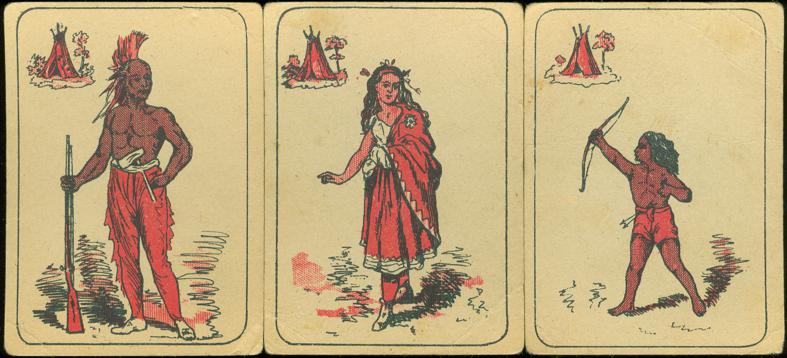
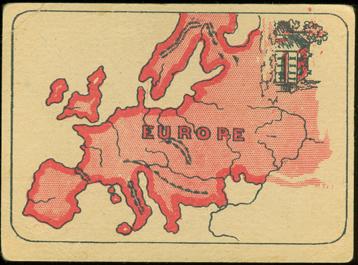
The
continents are roughly drawn, not always exact or correctly presented.
|
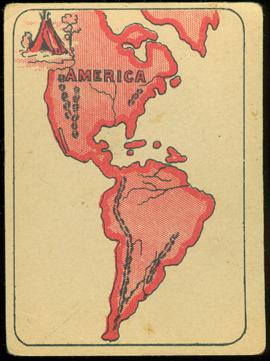
|
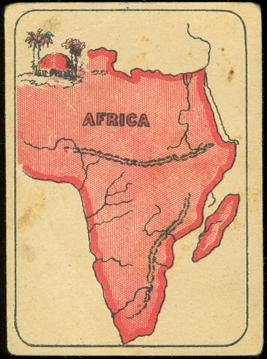 |
No countries
are shown, just chains of mountains and some main rivers.
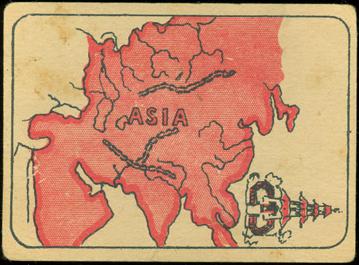
|
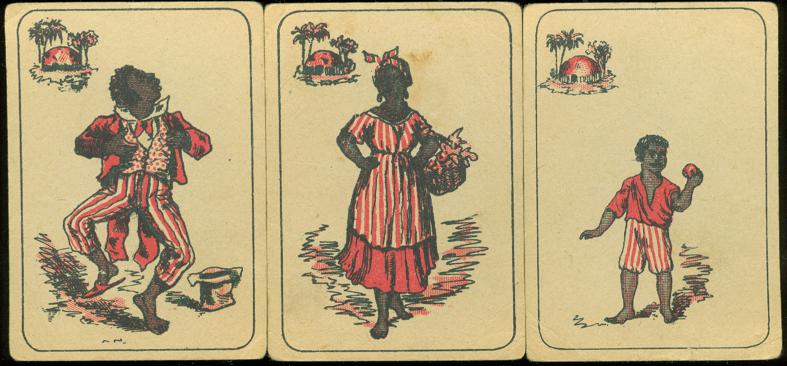
The deck
probably comes from the days that political correctness wasn't an issue. We
doubt that an African man would still be depicted in this way. And indeed...... in a later
version of this deck he is presented as a tribesman with spear and shield.
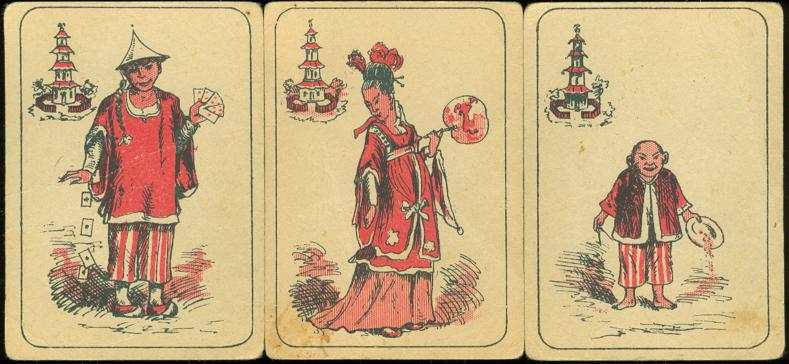
How do we know
this?
Our deck
came without a box, so there was no further information. While it was on its way
from Canada to the Netherlands, we accidentally came across an Ebay auction
where a "Game of Nations" was on offer. We took the liberty to
download the images, so we could offer a comparison. The deck has a similar
lay-out, the suit colors are the same, just like the aces, and the designs of
the courts show some similarity and are in full color. So our cards are probably
made for this game too.

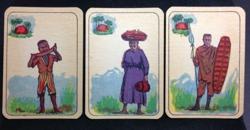
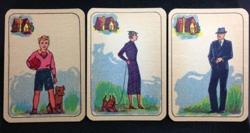
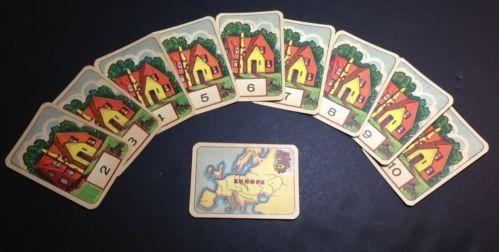
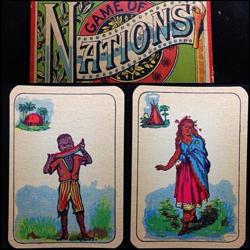
The seller of the
game dated his deck as from around 1890. However, when you look at the fashion
of the European courts, it's more likely to date from the 1920's or 30's. In that
respect our deck appears to be a little older. The fashion style is rather
Victorian, so the deck probably dates from sometime in the last two decades of
the 19th century.
The tipi, hut and pagoda have kept the same design, only the European house has
been redesigned in the later version.
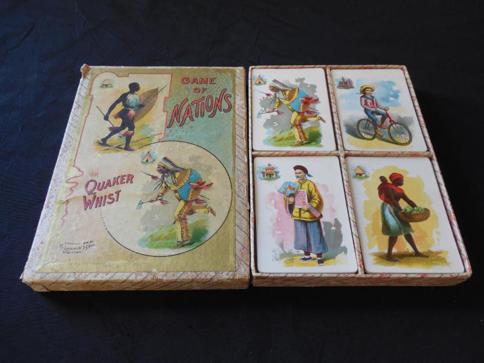
When researching
a bit further, we found out that the "Game of Nations, as published by the
McLoughlin Brothers from New York in 1898, was subtitled "Quaker
Whist". An earlier version -from about 1890- by the same publisher was
described as a trick taking game, similar to whist or euchre. So we hadn't been
too far off when we first qualified the deck as being of "our kind".
It's just that the place of the numbers on the pips makes it hard to arrange the
cards in your hand in a way that you can still see the numbers. Otherwise the deck could
easily be used for playing bridge too.
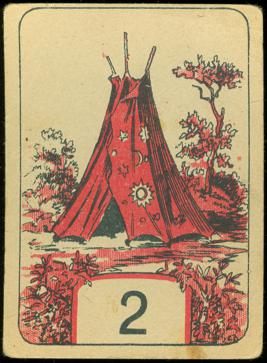

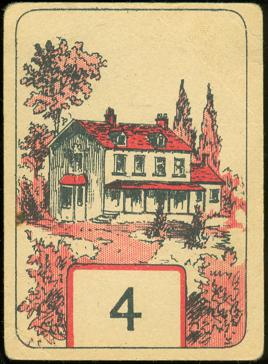
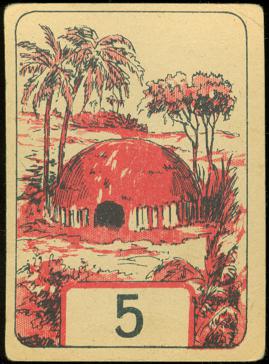

Besides the fact
that our deck was printed in an early off-set like technique (bookprint?) on
unfinished thick paper and has blank backs, there's nothing more to tell. No
indication to the name of the maker or publisher could be found. We did find a
picture of cards from the 1898 McLoughlin Bros. game set -see above- and those
designs are thus different, that we don't think that our deck could be an
earlier (or later) version of the McLoughlin publications. It's hard to judge
the quality by a picture, but we feel that our deck is from a cheaper edition. As the deck was
offered from Canada, there might even be a Canadian origin.
Maybe one of our visitors
can add some information about this deck. We'll keep our fingers crossed.
BACK TO PRESENT MONTH




















